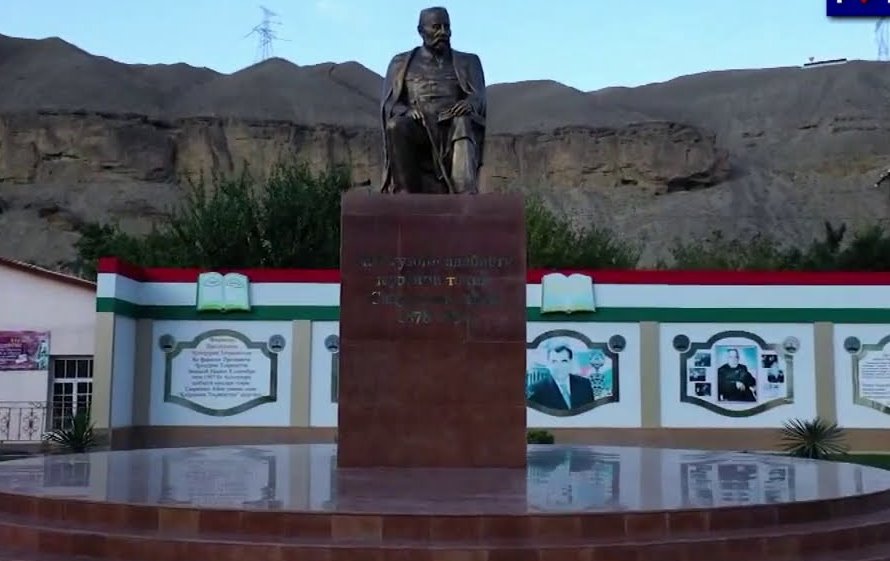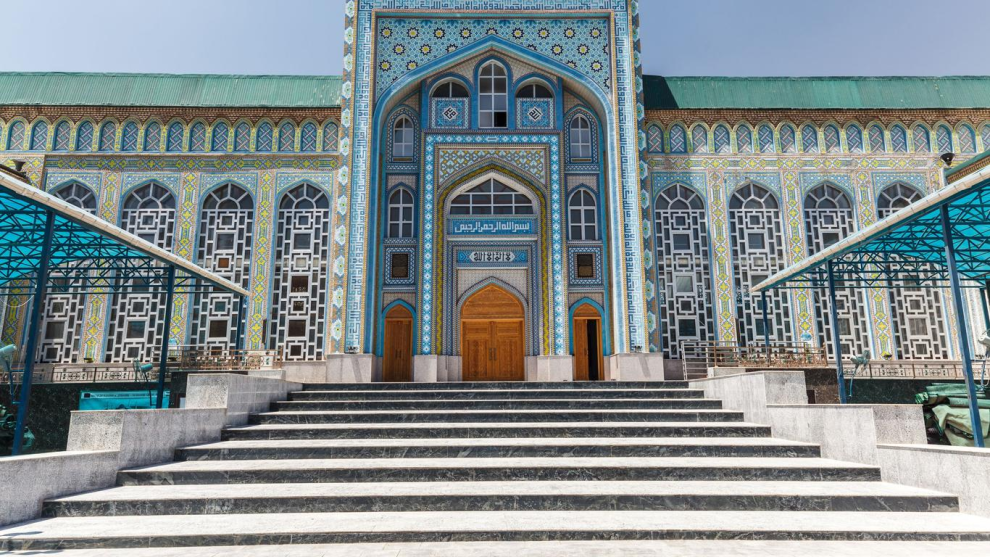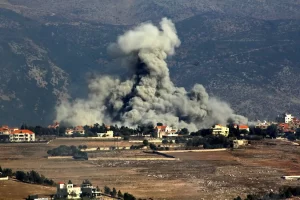During the years of independence in Tajikistan, the dissonant and ideologically incompatible names of a number of cities and regions have been massively renamed.
The legal basis of the toponymic policy of Tajikistan is currently the laws “On the names of geographical objects” and “On the state language of the Republic of Tajikistan”.
In order to match the national identity and perpetuate the memory of the great personalities of the nation, a number of cities in the regions of Tajikistan bear their names.
They can be conditionally divided into two groups: the first – statesmen or historical heroes, the second – figures of science and culture.
In honor of rulers and heroes
Spitamen – Nau
Chronologically, our list opens with the most ancient of them – the great Spitamen. He was the ruler and commander of Sogd, who in the 4th century BC defended his homeland from the invasion of Alexander the Great. He lived around 370-327 BC.
In honor of Spitamen, a whole district in the Sughd region, which was formerly called Nau, was named.
In addition, a number of small settlements, streets, schools and one bank bear the name of Spitamen.

Devashtich – Ganchi
More than a thousand years after Spitamen, a new hero appeared in the legendary Sogdiana. His name was Devashtich and he was also the ruler of the country.
Devashtich fought against the Arabs who attacked Sogdiana. Despite the fact that he was defeated and treacherously killed, the name of Devashtich became a symbol of the struggle for the freedom of the nation.
In the Sughd region, in honor of this hero, the Ganchinsky district was renamed Devashtich.
By the way, the districts of Spitamen and Devashtich are located in the neighborhood.
Ismoili Somoni – October
There is a special attitude to the person of Ismoili Somoni in Tajikistan. Hundreds of objects, both geographical and economic, cultural, educational and even natural, are named after him.
 Photo from shahrofar.tj
Photo from shahrofar.tj
Thus, the city district of Dushanbe, which was called Oktyabrsky under the Soviet Union, received the name of the founder of the Tajik state during the years of independence.
Temurmalik – Soviet
The ruler of Khujand during the years of the Mongol invasion in the 13th century is famous for waging a fierce struggle against the invaders – the hordes of Genghis Khan. The exploits of this commander were later legendary. The Tajik people consider him one of the greatest heroes in their history.
In honor of Temur Malik, a district in the Khatlon region was named – the former Soviet, which until 1953 was called Kizil-Mazar.
Vose
The Vose region was originally named after the leader of the uprising against the tyranny of the Emirate of Bukhara in Baljuvan at the end of the 19th century.
Abdulvose – this is the full name of the hero – was born between 1845-1847 in Darvaz. After the suppression of the uprising, in 1888 he was executed in Shakhrisabz by order of the Bukhara Emir Abdulahad.

The personality of Vose ideally suited the Soviet ideology, therefore, the district in the Kulyab region since its formation in the 30s of the twentieth century was named after him.
Bobojon Gafurov – Khujand
In Soviet times, the city of Leninabad surrounded the Khujand region. During the years of independence, Leninabad regained its ancient name, naturally, so that there were no coincidences, it was necessary to rename the district as well. It didn’t take long to think – the center of the district was called Gafurov in honor of the outstanding historian and statesman Bobojon Gafurov.
Therefore, they decided to give this name to the entire area.
Jabbor Rasulov – Proletarian
The Tajik authorities also decided to perpetuate the name of the first secretary of the Central Committee of the Communist Party of the Tajik SSR in the era of the heyday of the Soviet Union, Jabbor Rasulov.
New era – new ideological guidelines. The word “proletarian” has no place in the current realities, especially the word is foreign.
So they changed the name of the area.
In the name of scientists and culture workers
Rudaki – Leninsky
In the Soviet Union, there were traditionally Leninist districts around the capitals of each of the republics. Dushanbe was no exception – it was “ringed” on four sides by a district bearing the name of the leader of the proletariat.
Now the district bears the name of the founder of Tajik literature Abuabdullo Rudaki.
 Photo life.ansor.info
Photo life.ansor.info
Sino-Frunzensky
The name of the red commander Mikhail Frunze in Soviet times was very often found in the names of streets and schools, enterprises and institutions, collective farms and state farms.
In Dushanbe, the central stadium and the largest district were named after him.
In the very first years after gaining independence, his name was immediately replaced with Abuali ibn Sino – the name of the great Tajik scientist.
Firdavsi – Central
Another giant of Tajik literature, Abulkosim Firdavsi, is also represented in modern Tajik toponymy.
His name was given to one of the 4 districts of the city of Dushanbe, which used to be called Central.
Nasir Khusrav – Beshkent
The area formed in the desert on the southern border with Uzbekistan was originally called Beshkent.
The name of the great thinker of the 11th century, Nosiri Khusrav, was chosen to rename the area. The decision was not accidental – Nosiri Khusrav was born in Kubodiyon, in a neighboring area.
Jalaluddin Balkhi – Kolkhozabad
The territory now occupied by the Balkhi region was called Kaganovichabadem at the time of formation – in honor of the Soviet party leader.
At the same time, Lazar Moiseevich Kaganovich was still alive.
But under Khrushchev, he fell out of favor with the Soviet leadership and was removed from all positions. They urgently began to change the names of objects that bore his name.
So Kaganovichabad became Kolkhozabad. After the 2000s, due to ideological considerations, the area was named after the famous poet and thinker of the 12th-13th centuries. Jaloliddin Rumi.
A few years later, due to the fact that the pseudonym Rumi is in no way associated with Tajikistan and its history, the second pseudonym of the great poet, Balkhi, was used.
Mir Syed Ali Hamadani – Moskovsky
A prominent Islamic theologian and scholar of the Middle Ages, Mir Sayyid Ali Hamadoni had a great influence on the religious and secular life of the Tajik people.
Given these merits, the Moskovsky district in the south of Khatlon was named after this great thinker. And the district was formed back in the 30s of the twentieth century under the name of Chubek.
Abdurrahmani Jomi – Kuibyshevsky
Initially, the area where the district is located, bearing the name of one of the luminaries of Tajik classical literature, Abdurahmon Jomi, was called Khodjamaston.
In the Soviet years, it was known as the Kuibyshev region, was named after one of the party leaders of the USSR.

After independence, it was first called Aral, then the name Khodjamaston was returned. At the beginning of the 21st century, it was renamed again in honor of Jomi.
Shamsiddin Shahin – Shuroabad
Shamsiddin Muhammad Shokhin – Tajik poet, educator, follower of Ahmad Donish . The Shuroabad district, which at one time underwent various transformations, was either part of the Leningrad, then the Moscow districts, then it became the Dashtijum district, then it was again disbanded.
With the advent of the district with the center in the village of Shuroabad, the district continued to be called that way. More recently, it was named after the poet Shokhin.
Aini – Zahmatabad
There are many beautiful and euphonious names of places in the Zarafshon river valley. One of them is Falgar. But when the district was formed as part of the Sughd region, the Soviet authorities chose a new name – Zakhmatabad, which means that this is a city of workers.

In the 1950s, after the death of Sadriddin Aini, the founder of the Tajik Soviet literature, his name was transferred to Zakhmatabad.
Tursunzade – Regar
After the death of one of the greatest poets of the 20th century Mirzo Tursunzade in 1977, his name was transferred to the city of Regar.
Karatag, once the former city of the Bukhara Emirate, where the poet was born, administratively belonged to the Regar region.
Source: asiaplustj






































